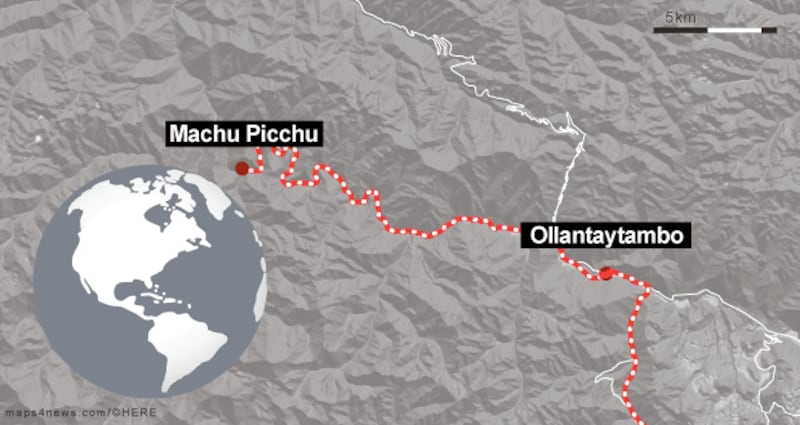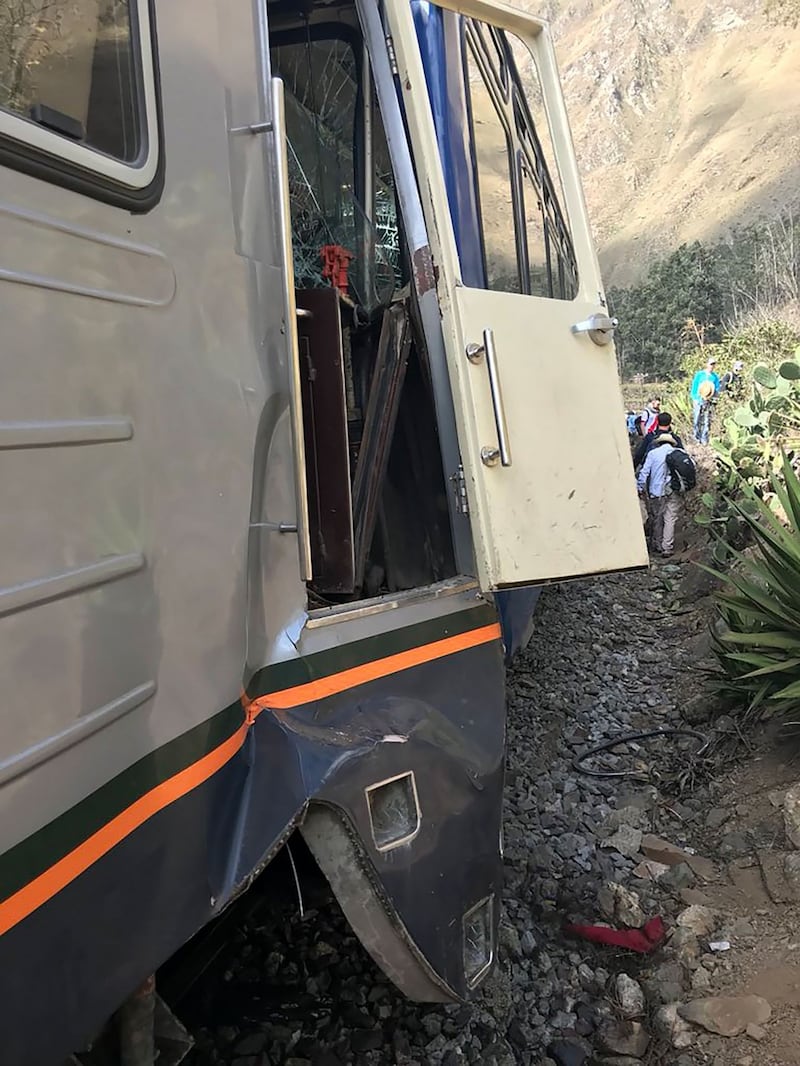Several foreign tourists have been injured in a collision between two passenger trains near Peru’s most popular tourist site – the Inca citadel Machu Picchu.
The incident on Tuesday took place when trains operated by two competing rail companies crashed on the principal route to the ruins from the village of Ollantaytambo, near Cusco, in southern Peru, said local police.
At least 10 people were injured in the collision, five of them seriously, said Peru’s civil defence institute.

Witnesses said a train operated by PeruRail hit from behind a train operated by IncaRail, another rail operator which takes tourists to the Unesco world heritage site.
Social media posts showed the two trains shunted together on a railway track.
Other images showed shattered glass on a leather seat and another set of seats hanging outside a carriage.

IncaRail said only one of its passengers, a Chilean woman, had been injured in the accident and the rest would continue their trip to Machu Picchu.
PeruRail said injured people were taken away in ambulances and it was investigating the cause of the incident.
However, at least one passenger on the IncaRail train told local news outlets that the train had stopped because of a protest which had blocked the railway tracks.
“We stopped for an hour, then the protest was cleared, the train continued its route, and five minutes later we felt a strong impact on the back. It was a PeruRail train that hit us,” Valeria Lozana told the state news agency Andina.
Police are investigating whether the protest was carried out by a group of Peruvian tourists who were not able to board the train at a point where it is reserved for local communities who pay a discounted fare.
Visitor numbers have boomed to Machu Picchu in recent years, topping 1.4 million people in 2017 – an average of 5,000 people a day during July and August, double the 2,500 visitors recommended by Unesco. – Guardian











